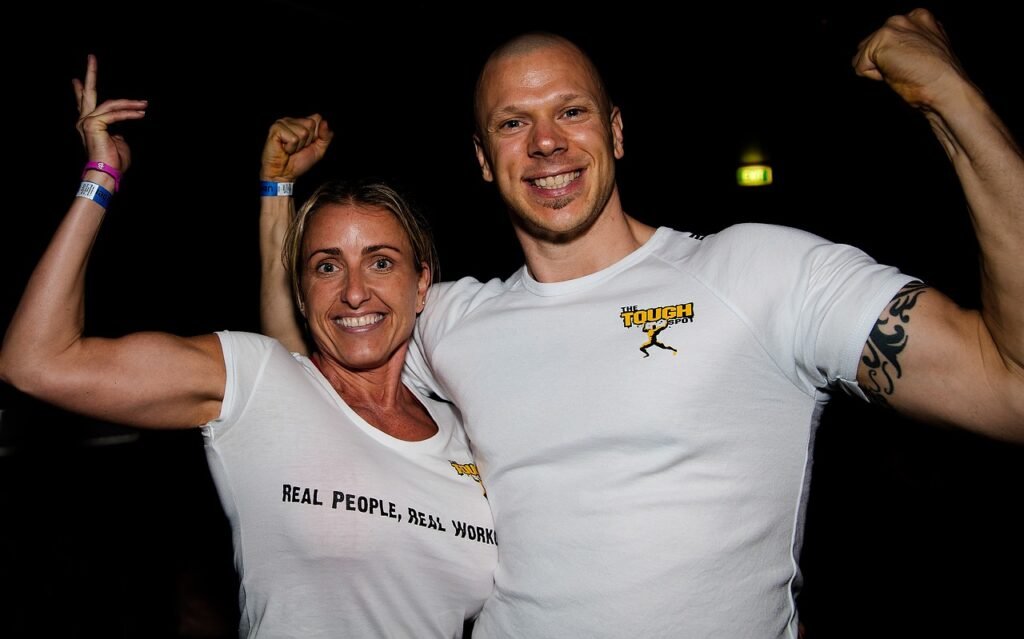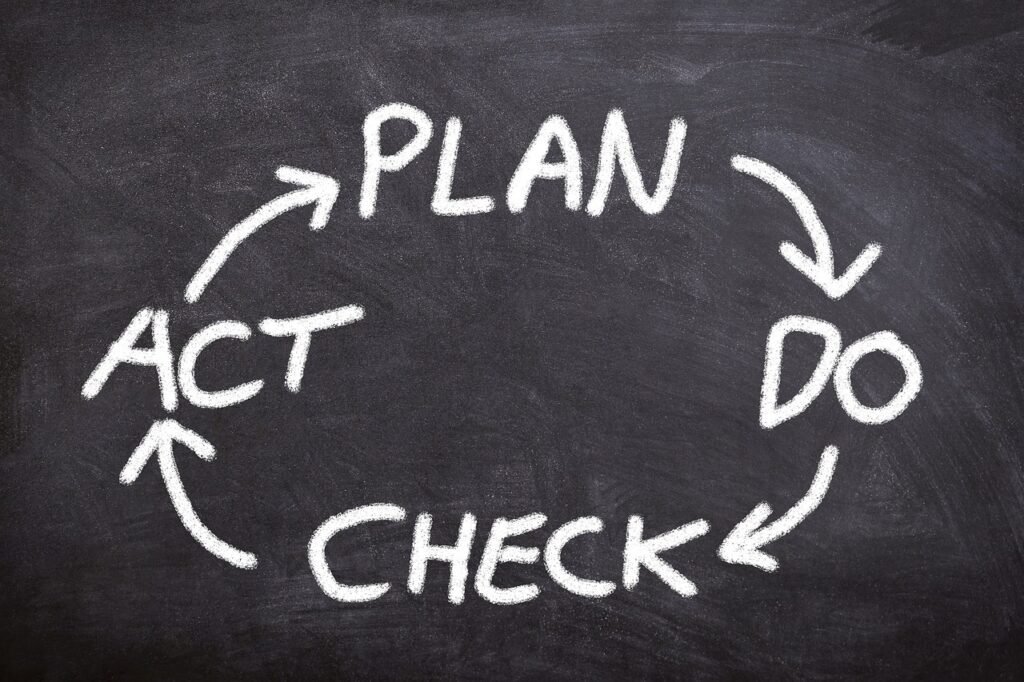
Grasping Personal Growth

Alright, let’s get real about personal growth. It’s basically leveling up your life.
Think of it like a video game where you’re the main character, and you gotta keep improving your skills to beat the game.
Whether it’s becoming a better communicator, upping your emotional intelligence, or smashing it at your job, personal growth is all about pushing your boundaries.
First things first, you gotta know what you want to work on.
Is it getting better at handling stress?
Maybe you want to nail public speaking or be that go-to person everyone turns to for advice.
Personal growth isn’t a one-size-fits-all kinda deal; it’s super personal (duh).
Once you’ve got a rough idea, start exploring the areas you want to improve.
Dive into some self-reflection. What are you already good at? Where do you trip up?
Grab some input from friends, family, or even coworkers. Sometimes they see stuff about us that we miss.
Now, here’s the fun part: figuring out how to make those improvements.
Personal growth isn’t just about making a list of stuff you wanna get better at.
It’s about figuring out actionable steps.
Like, if you want to be a better listener, maybe start by practicing active listening in your daily conversations.
If emotional intelligence is your jam, try journaling your feelings or taking up mindfulness.
And hey, don’t forget about learning. The world is packed with resources.
Books, podcasts, online courses—there’s no shortage of ways to feed your brain.
Whether it’s hitting up a workshop or binge-watching TED Talks, always be on the lookout for stuff that can help you grow.
Remember, it’s a marathon, not a sprint. Keep tabs on your progress, and don’t beat yourself up over slip-ups.
Celebrate those little wins along the way, too. Personal growth isn’t just about the destination; it’s about enjoying the ride.
Establishing Clear Objectives

Alright, now that we’re all pumped about personal growth, let’s talk about setting some killer objectives.
You can’t hit a target if you don’t know what you’re aiming for, right? So, think about what you really want to achieve.
Got a vision? Awesome, let’s make it concrete with some SMART goals.
What are SMART goals?
Glad you asked. It stands for Specific, Measurable, Achievable, Relevant, and Time-bound.
This isn’t just jargon; it’s like a roadmap for your growth.
Specific means clear and well-defined.
For example, instead of saying “I want to get fit,” say “I want to run a 5K in under 30 minutes.”
Measurable means you can track your progress, like knowing how many miles you can run now versus next month.
Achievable is all about setting goals that are within your reach but still a bit challenging.
You don’t wanna set yourself up for failure.
For instance, if you’ve never run before, maybe aim for a 5K first, not a marathon.
Relevant means it should matter to you and align with your broader life goals.
And Time-bound? That’s setting a deadline to keep you accountable.
Saying “I want to run a 5K by the end of the year” gives you a timeline to work with.
So, grab a pen and paper (or your phone, let’s be real) and jot down your goals.
Be super clear about what you want to achieve and by when.
Like, “I want to improve my public speaking skills by attending a Toastmasters meeting every week for the next six months.” Or “I want to save $5,000 in a year by setting aside $100 every week.”
Once your goals are crystal clear, break them down into smaller tasks.
If your goal is to write a book, set tasks like researching, outlining chapters, and writing a set number of pages each week.
This way, big goals become less overwhelming and totally doable.
Setting clear objectives sets you up for success.
Alright, before diving headfirst into your growth journey, let’s hit pause and check where you’re starting from.
Think of this as taking stock of your inventory in a game.
What are you good at? What needs some work?
Grab a journal or your favorite note-taking app and start jotting down your strengths and areas where you stumble.
Maybe you’re a rockstar at organizing but kinda shaky when it comes to public speaking.
Being brutally honest with yourself here is key.
Now, don’t just rely on your own perspective.
Sometimes we’re too close to see the full picture.
Hit up your friends, family, or even your coworkers for their thoughts.
They can often point out things you didn’t even realize about yourself.
Maybe your buddy thinks you’re a natural leader, or your boss notices your knack for problem-solving.
This external feedback is like gold.
After gathering all this info, look for patterns.
Are there common themes?
Maybe multiple people mentioned your awesome creativity or that you get stressed under pressure.
Use this intel to map out your starting point.
If you’re not sure where to begin, try doing a SWOT analysis.
Sounds fancy, but it’s pretty simple: list your Strengths, Weaknesses, Opportunities, and Threats.
Strengths and weaknesses are your internal stuff, while opportunities and threats are external.
For instance, a strength could be your killer time management skills, while a threat might be a rapidly changing job market.
Finally, look at your results and make some notes about what stands out.
This will give you a clear snapshot of where you’re at right now.
It’s like knowing your character’s stats before you jump into the next level of your game.
Plus, this sets you up perfectly for figuring out your next moves and really nailing that personal growth plan.
Alright, now that you’ve set your goals and know where you stand, it’s time to get serious about your game plan.
Think of this step like plotting out a roadmap for a cross-country trip.
You wouldn’t just start driving without a map, right? So let’s break it down.
First, take each of your goals and split them into bite-sized pieces.
Big goals can feel like climbing Everest, but smaller tasks? Totally doable.
For example, if you wanna write a book, break it into chunks like researching, outlining chapters, writing a page a day, and revising.
Each small step gets you closer to the big win.
Deadlines are your best friend here.
Setting a timeline for each task keeps you accountable and on track.
Instead of just saying, “I’ll finish my book someday,” try, “I’ll outline all chapters by the end of this month.”
These mini-deadlines make the whole process way less intimidating and way more actionable.
And don’t forget about resources.
What do you need to hit those mini-goals?
Maybe it’s time management tools, specific books, or even a mentor to guide you.
Line up what you need so you’re not scrambling last minute.
Next, figure out how to fit these tasks into your daily routine.
Are you a morning person? Maybe tackle the toughest tasks first thing.
More of a night owl? Schedule your tasks when you’re most alert and productive.
It’s all about making your plan work for you, not against you.
Don’t skip the review step. Regularly check your progress and tweak your plan if needed.
Life happens, and flexibility is key. Maybe your original timeline was too ambitious, or maybe you discovered a more efficient way to do things.
Adjust as you go.
So, plot out your roadmap, set those deadlines, gather your resources, and slot those tasks into your daily life.
You got this!
Executing the Plan

Alright, so you’ve got your goals and a killer game plan.
Now it’s showtime.
The key here is consistency.
It’s like going to the gym: one epic workout won’t do much, but regular sessions?
That’s where the magic happens. Commit to those small daily actions that add up over time.
First up, make sure you’re tracking your progress.
Use whatever works for you—journals, apps, sticky notes plastered all over your wall.
Regular check-ins help you stay on track and adjust if something isn’t working out.
Remember that thing about fitting tasks into your routine? Stick with it.
If you’re a morning person, crush those big tasks first thing when your brain’s fresh.
More of a night owl? Do your heavy lifting later in the day.
The trick is to find what fits naturally into your life so it doesn’t feel like a chore.
Don’t go solo if you don’t have to. Share your goals with a friend or join a group with similar objectives.
Accountability buddies are gold. They keep you honest and might even give you that extra push when you’re slacking.
Also, reward yourself. Seriously, hit those milestones and celebrate.
It doesn’t have to be anything fancy. Finished that chapter of your book?
Treat yourself to a fancy coffee.
Smashed your fitness goal? Maybe grab some new workout gear.
Rewards make the whole process more fun and keep you motivated.
Obstacles are gonna pop up, no doubt. Maybe a deadline got pushed up at work, or you caught a nasty cold.
That’s life. The important thing is to adapt and not let these bumps throw you off course.
Revisit your plan, tweak it if you need to, and keep moving forward.
And hey, don’t forget to breathe.
This is about growing, not stressing yourself out.
Keep a balance. Work hard, but also make time for rest and fun.
You’re not just aiming for a goal; you’re building a lifestyle that supports your growth.
Keep grinding, and enjoy the journey.
Acquiring New Skills and Knowledge

Always learning new stuff is super key for any personal growth plan.
According to the World Economic Forum, by 2025, half of all employees will need to significantly reskill or upskill.
So yeah, it’s pretty important to keep your skills fresh. There are so many ways to do this—think courses, workshops, books, and podcasts.
Want to get better at negotiating?
Enroll in an online course or grab a book by an expert.
The cool thing is, expanding your skillset not only boosts your personal growth but also keeps you competitive in today’s ever-changing world.
Also, mix things up. Don’t just stick to one type of learning.
If you’re a visual learner, go for video tutorials or infographics.
More of an auditory person? Podcasts and audiobooks are your jam.
This way, you’re not just gaining knowledge but also figuring out what learning style works best for you.
Networking is another game-changer. Join groups or communities that focus on what you want to learn.
These places are goldmines for insider tips, resources, and maybe even a mentor.
Plus, discussing ideas with others can give you a fresh perspective and keep you motivated.
Another trick? Teach what you learn.
Sounds counterintuitive, but explaining concepts to someone else helps you understand them better.
Whether it’s a blog post, a YouTube channel, or just chatting with a friend, teaching reinforces your own knowledge.
And let’s not forget about technology.
There are apps and online platforms for practically everything nowadays.
Duolingo for languages, Coursera for academic courses, LinkedIn Learning for professional skills—the options are endless.
Make use of these to fit learning into your daily routine.
So, stay curious and keep feeding that brain of yours.
Keep an eye out for new ways to learn and don’t be afraid to step out of your comfort zone.
Learning is a lifelong adventure, and there’s always something new to discover.
Conquering Challenges

Alright, let’s be real. Challenges are gonna pop up.
It’s like playing a game, and suddenly there’s a tricky boss level you didn’t see coming.
The key? Don’t panic; strategize. First, identify what’s likely to trip you up.
Is it time management? Maybe it’s a lack of resources, or you’re battling self-doubt.
Knowing your enemy is half the battle.
Procrastination? Yeah, that beast can be tamed.
Try breaking your tasks into smaller chunks and set mini-deadlines.
Use timers like the Pomodoro technique—work for 25 minutes, then take a 5-minute break.
It keeps you focused without feeling like a slog.
Time crunches? They happen.
Look at your schedule and carve out blocks dedicated to your goals.
It might mean waking up 30 minutes earlier or cutting down on binge-watching sessions.
The idea is to make your goal a non-negotiable part of your day.
Lack of resources? Get creative.
Maybe you can’t afford that fancy course right now, but there are tons of free resources online.
YouTube tutorials, free webinars, and community college courses can be lifesavers.
Libraries still exist, and they’re packed with info you can use for free.
Mental blocks are tricky.
If you’re stuck in a negative thought loop, try some mindfulness or journaling.
Sometimes just getting your thoughts out on paper can clear your mind.
Talking to someone can also give you a fresh perspective.
A friend, a mentor, or even an online community can offer support and new ideas.
Accountability can be your secret weapon.
Tell a friend about your goals or join a group where everyone shares their progress.
Knowing someone else is keeping tabs can give you that extra nudge to keep going.
Remember, it’s all about adaptability.
Life’s gonna throw curveballs, but staying flexible helps you dodge and weave without losing momentum.
Adjust your strategies as needed and keep pushing forward.
Reviewing and Modifying the Plan

Alright, let’s talk about checking in and tweaking your plan.
It’s kinda like tuning up a car; you gotta do it regularly to keep things running smoothly.
Start by setting aside some time each week or month to review your progress.
Ask yourself, “What’s working? What’s not?” Be honest here—sugarcoating doesn’t help anyone.
Look at the goals you set and see how you’re tracking.
Are you hitting those mini-deadlines?
If yes, awesome! Celebrate those wins, no matter how small. If not, don’t sweat it—figure out why.
Maybe the goals were too ambitious, or maybe life threw a curveball your way.
Adjust them to be more realistic if needed.
Sometimes your priorities shift, and that’s okay.
Maybe a goal that seemed super important a few months ago isn’t as crucial now.
Feel free to update your objectives to reflect your current situation.
It’s your plan, so make it work for you.
Feedback is gold, remember?
Check in with those friends, family, or coworkers who gave you initial input.
They might notice progress you’ve overlooked or offer new insights.
Fresh eyes can help you see things from a different angle.
Keep an eye out for new resources or opportunities, too.
Maybe you stumbled upon a new book or online course that could give you a boost.
Incorporate these into your plan to keep things fresh and exciting.
Don’t forget to be flexible.
Life’s unpredictable, and sticking rigidly to a plan that’s no longer relevant won’t get you anywhere.
If something’s not working, change it up. Adapt and evolve as you go.
Finally, don’t just focus on the end goals; enjoy the process.
Each step forward, each adjustment, is progress.
It’s not just about the destination but the journey, right?
So, keep those check-ins regular, stay flexible, and keep moving forward.
Your personal growth plan is a living document, and it’s okay to revise it as you grow.
